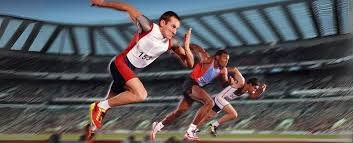Every four years, the Olympics and Paralympics showcase the extraordinary limits of human athleticism. Watching the world’s fastest runners compete is not only thrilling; it’s a testament to the human body’s incredible potential. But what if you’re not an Olympic athlete? Can you still improve your running speed? The answer is yes. Understanding the science behind sprinting can help you run faster, whether you’re a weekend runner or an aspiring athlete.
The Basics of Sprinting Speed
At the core of sprinting lies a straightforward principle: your running speed is determined by two main factors—stride length and step frequency. In simple terms, running faster means either taking longer steps or increasing the number of steps you take per second.

“To run faster, you have to either lengthen your strides or speed up your strides,” explains biomechanics and strength researcher Sam Gledhill. “However, improving one factor should not have a negative effect on another. For example, increasing the frequency of your steps should not make your strides shorter.” This means that when working on your sprinting technique, you need to balance both step length and frequency. The ideal approach varies from person to person, depending on individual strengths and biomechanics.
The role of step length and frequency
Step length: The distance covered in each stride is crucial for speed. Athletes such as Usain Bolt, famous for his impressive sprinting records, rely heavily on their stride length. Bolt’s stride can extend up to 2.872 meters (9.5 feet) during his record-setting 100-meter race, contributing significantly to his speed.
Step frequency: This refers to how quickly you take steps. Runners who focus on step frequency have a higher turnover rate, which helps them achieve faster speeds over shorter distances.
Interestingly, research shows that female runners often benefit more from increasing step frequency, while male runners may find more benefit in increasing step length. This may be related to the positive effect of leg length on step length.

Genetic factors and training
Genetics play a role in determining how fast you can run, but they are not the only factor. For example, sprinters typically have well-developed hip and knee flexor muscles. Studies show that elite sprinters have larger hip flexors than non-sprinters. These muscles help extend the legs and push off the ground more forcefully, contributing to longer strides and faster sprints.
Genetics is not the only factor, however. Training and technique can significantly affect sprint performance. Although you may not be able to change your genetic makeup, you can improve your sprinting ability through focused training and technique adjustments.
Improving Sprint Technique
Sprint training involves more than just running fast. It also requires improving your technique to maximize efficiency and speed. Here are some key aspects to focus on:
Foot strike and ground contact: How and where your foot hits the ground can affect your speed. Efficient sprinters touch the ground with a bent foot, which is similar to a pawing action, rather than landing flat-footed. This technique helps propel the body more effectively.
Body positioning: At the start of a sprint, leaning forward with the torso and maintaining a horizontal shin angle can help generate horizontal force. As you reach top speed, the emphasis shifts to vertical force, but maintaining proper body alignment throughout the sprint is important for efficiency.
High knees and foot action: Proper foot movement is essential. For example, when doing the high knee drill, focus on bringing your heel to your buttock rather than lifting your knee. This action helps improve range of motion and the speed of leg turnover.
Strength and flexibility: Building strength and improving flexibility in your legs, particularly in the hip area, can increase both step length and frequency. Exercises that target the hip flexors, hamstrings and calves are beneficial.
Neuromuscular coordination: Sprinting relies on quick and efficient communication between your brain and muscles. Exercises that increase motor neuron stimulation and coordination can help improve your step frequency.
Training and practice
Consistent practice is key to improving sprinting speed. Incorporating specific sprint drills and exercises into your routine can lead to notable improvements. For example, regular sprinting workouts, interval training and technique drills can help hone your skills and increase your speed.

Also, experimenting with different techniques can help you find what works best for you. Every runner has unique biomechanics, so tailor your sprinting technique to your individual needs.
